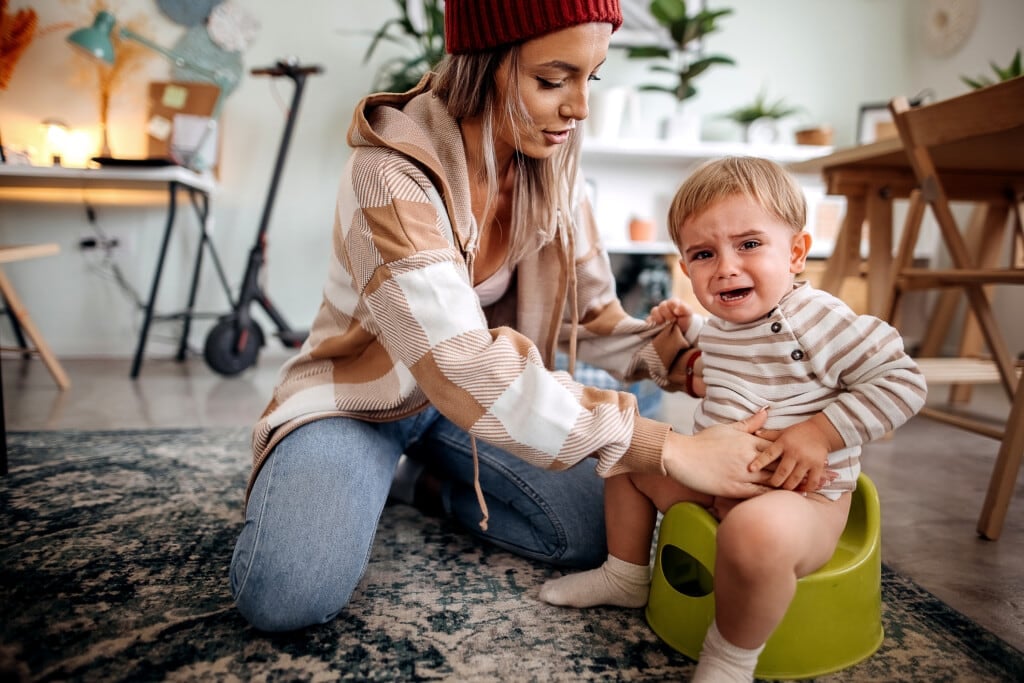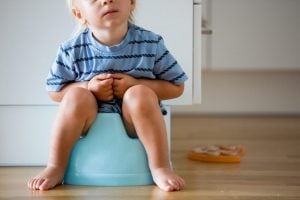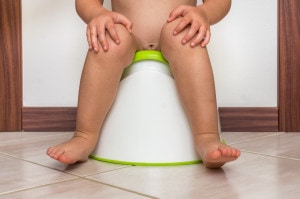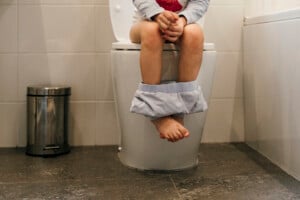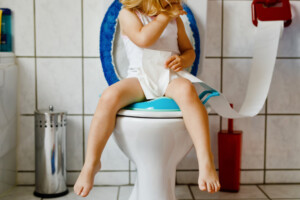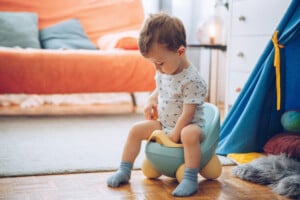Pooping in the potty can be quite traumatic for many children. The whole process can be rather alarming between the surprise of what happens when it hits the water and the different sensations a child may experience during the event. And for children with negative past pooping experiences or sensory issues, there can be a lot of fear surrounding this body process. If you have a toddler who is afraid to poop on the potty, try these tips to make them feel more comfortable and confident.
Help Your Toddler Poop on the Potty
Treat Withholding First
When children develop anxiety around pooping, one of our first inclinations as parents and caregivers is to find creative ways to get them to poop on the potty. But, we must first address any underlying physiological roadblocks preventing them from being successful.
One of the most significant issues around toddler pooping is constipation. We all know that being constipated can be highly uncomfortable. Add that to the need to practice a new skill of doing it on the potty, and it can be pretty anxiety-provoking.
Constipation can arise for several reasons, but one thing we often see during the potty training months (and years) is that children will withhold their poop to avoid having to poop on the potty. Unfortunately, withholding can lead to a vicious cycle and cause even more distress and pain if left unaddressed. Sometimes, parents have to resort to suppositories or oral laxatives to force things to get moving.
First, you will want to ensure they have normal bowel habits. Ideally, children should go at least once daily, but some may go every other day. You may need to take a break from potty training to get them on a healthy schedule. Getting them comfortable with pooping again takes precedence over where they do it. So, if your child is more comfortable pooping in diapers, revert to that until you can see their bowel habits are back to normal.
Focus on Diet and Hydration
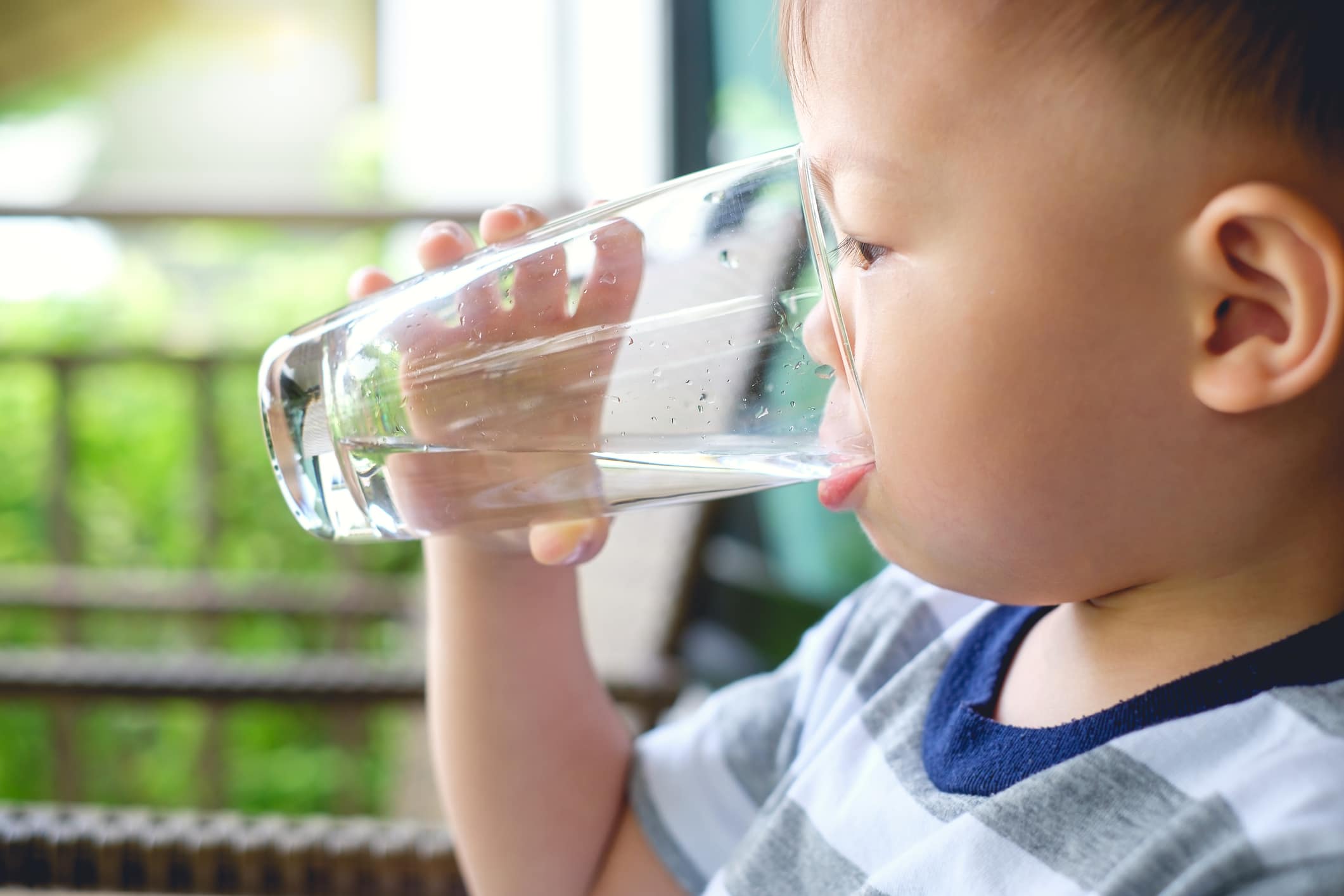
To keep their bowels as happy and healthy as possible, keep them hydrated with plenty of water. If you notice their bowel movements are infrequent, you can try to add prune juice to their water in the morning each day. Just make sure that the addition doesn’t discourage them from drinking.
Next, what they eat is essential. We know toddler diets can be highly preferential at times, and often, the foods that catch their eye are not the most gut-friendly. Where you can, try to increase their fiber intake. Foods high in fiber include:
- Pears
- Berries
- Apples
- Bananas
- Avocados
- Carrots
- Broccoli
- Brussels sprouts
- Leafy vegetables like kale
- Legumes
- Oats
- Nuts
- Sweet potatoes
Avoid increasing their fiber intake too rapidly, which can cause bloating and discomfort. Instead, start slowly, and if you need to, look for ways to be creative. For example, green smoothies are a great way to conceal kale and avocados, or you can make fun pictures on their plates featuring an assortment of fruits and veggies.
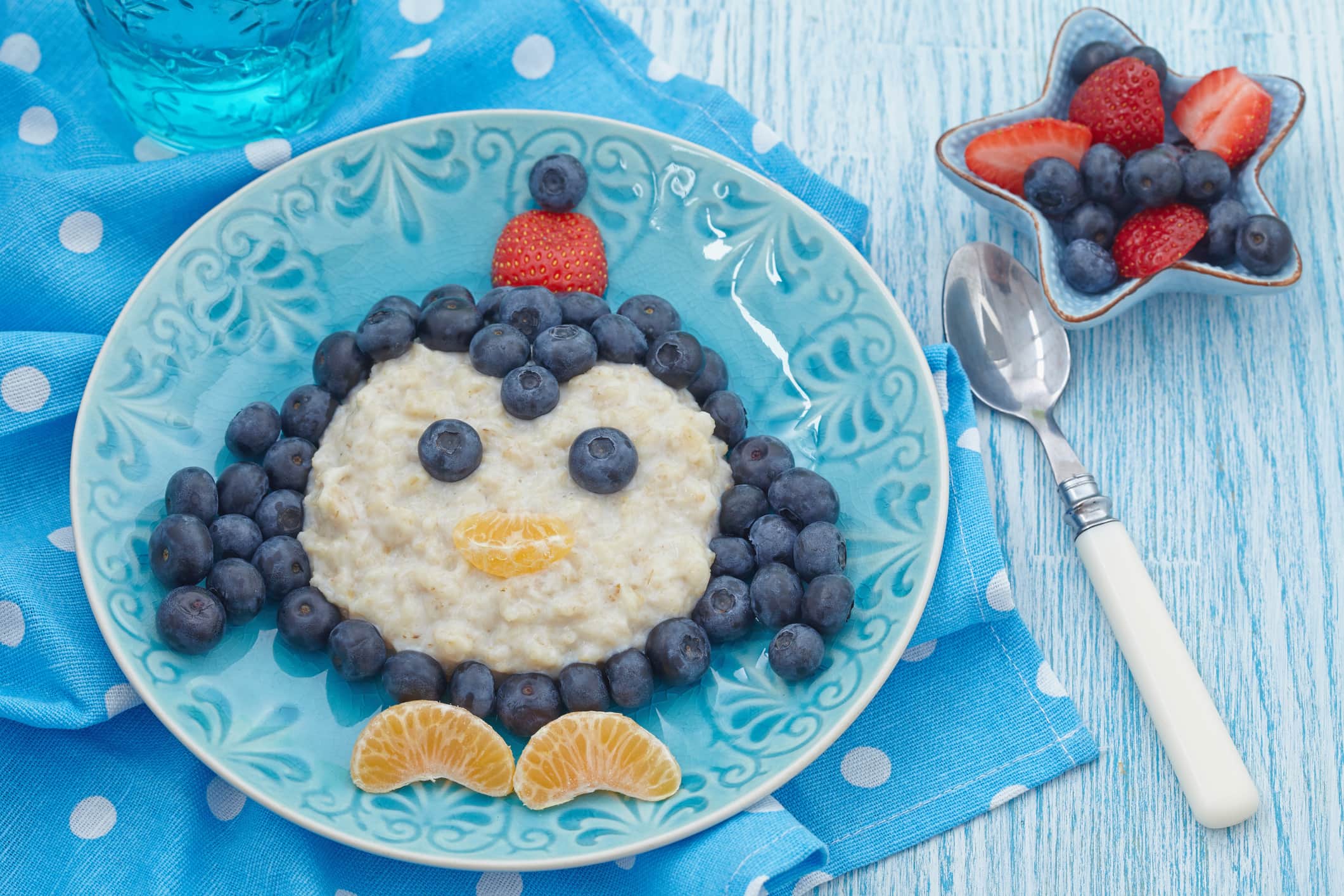
Be Consistent with Feeding Schedules
Part of having healthy bowel habits includes regulating your eating schedule. Most toddlers would snack throughout the day when left to their own devices. But snacking can throw off the bowels.
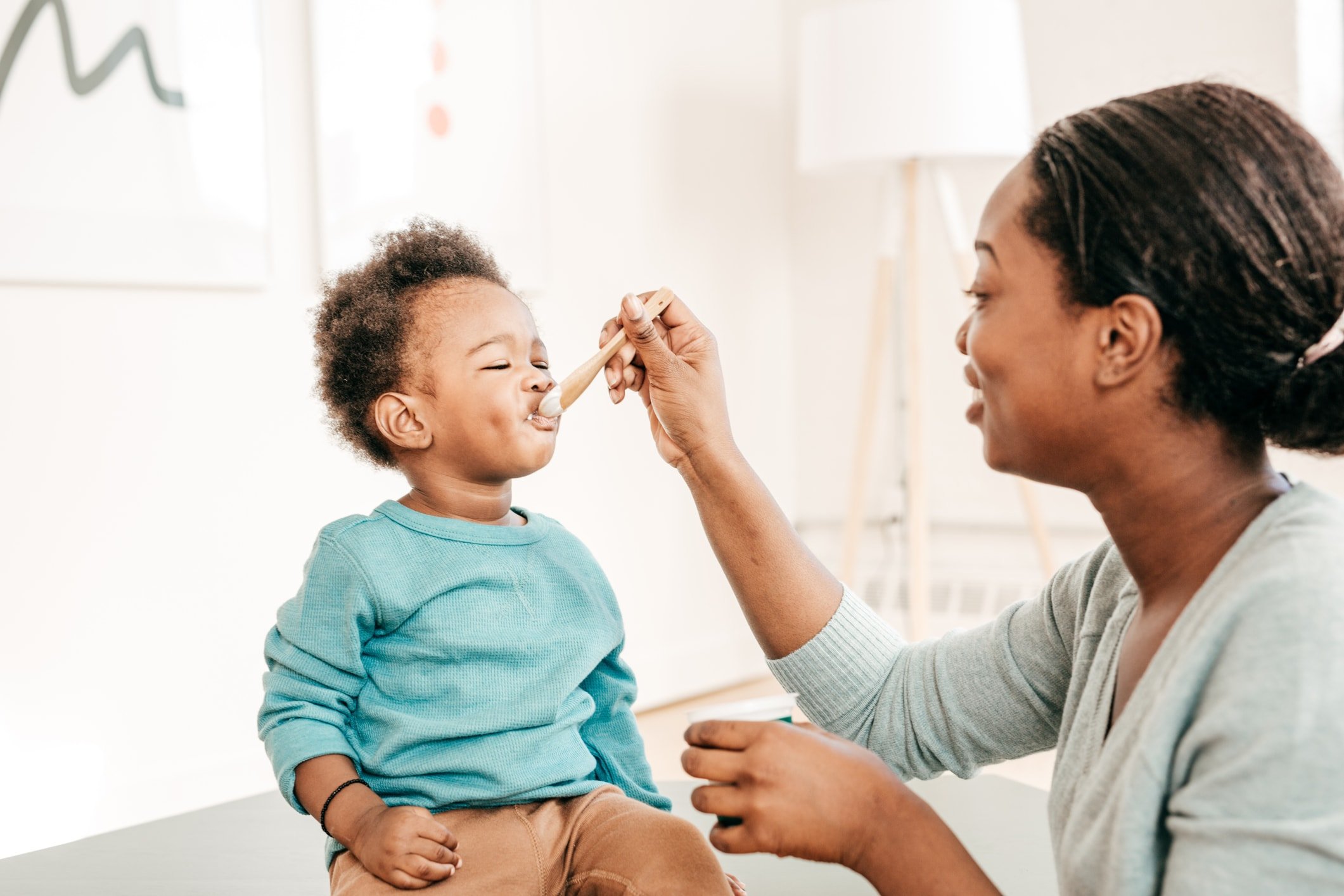
We know that toddlers’ stomachs quickly digest food given their small size, so instead of allowing snacking between 3 main meals, opt to offer 4-6 smaller meals with various foods. The menu can be relatively consistent each day, but the idea is to expose your child to various fiber and protein sources and reduce snacking on crackers and the like.
Getting your child on a regular feeding schedule helps the bowels become more regulated. Therefore, you and your child will have a better chance at predicting and preparing for bowel movements, as the need will likely arise around the same time every day.
Acknowledge Their Fears

Children need to have their fears and concerns acknowledged by their parents. Snuggle with your child and ask what makes them scared to poop on the potty. Avoid prompting them unless they are not forthcoming, and then you may want to ask questions like “Does it hurt?” or “Do you not like to see it in the potty?”
When they tell you what worries them, don’t dismiss their fears but instead say something like, “I can see why that makes you feel worried.” You can follow it up by saying, “We will work together so that you feel comfortable the next time you need to go.”
Opt for Gradual Exposure Approach
When children become fearful of using the potty, they may gravitate toward pooping in a specific spot in the house — rarely is it the bathroom. You can follow this step-by-step approach to get them more comfortable using the potty. (Allow your child to become very comfortable with each step before moving on. Know that this will not be a quick process.)
Step 1: Allow them to poop in their diaper/pull-up somewhere in the bathroom.
Start by getting them comfortable with pooping in the bathroom over anywhere else. Then, clean them up in the bathroom right after, and if you can, flush their poop down the toilet. Bonus points if they flush it themselves. Give them a small reward like a few chocolate chips, a sticker, or a fun game together. If they do this, let them know how proud you are of their efforts. If the bathroom is too scary, choose a spot in the house together to poop in their diaper.
Step 2: Have them poop in a diaper/pull-up standing next to the toilet.
Your goal is to increase their comfort with being around the toilet while pooping, so you may want to set a fun book on the toilet lid or a few toys to encourage them to stand and even touch the potty while pooping.
Step 3: Have them sit on the potty to poop with their diaper/pull-up on.
This step may be a tough sell, but you can ramp up your reward here to encourage them. Once they become familiar with pooping in the diaper while sitting on the potty, you may try pre-cutting a hole in the diaper so that the poop drops into the toilet.
Step 4: Go sans diaper, but hold onto their hips while they go.
Holding their hips where their diaper is usually wrapped around them can comfort them as they take this big step. They will likely not be able to go each time they try, but offer a small reward with each effort to encourage them to keep up the good habit. Even something as simple as adding a few drops of food coloring to the toilet water can make the experience more fun and incentivize them to do it again.
Still No Luck?
Poop fears are complicated to overcome. And, it is something that your child will likely not move past for several weeks to perhaps even months. But if you find your child is extremely upset or distressed, or progress is just not happening despite your best attempts, never hesitate to reach out for support from your child’s pediatrician or a potty training expert.


















